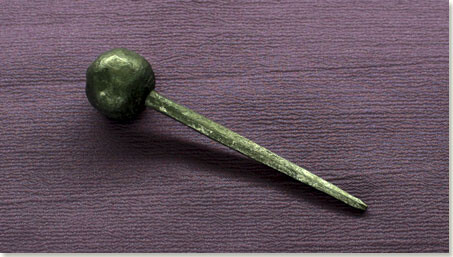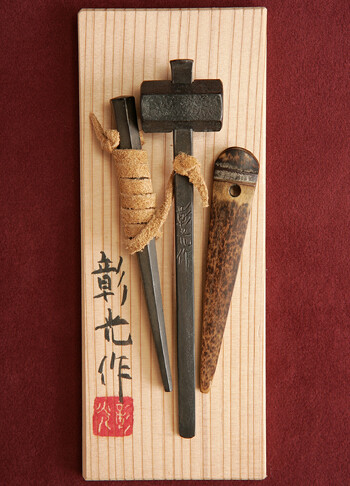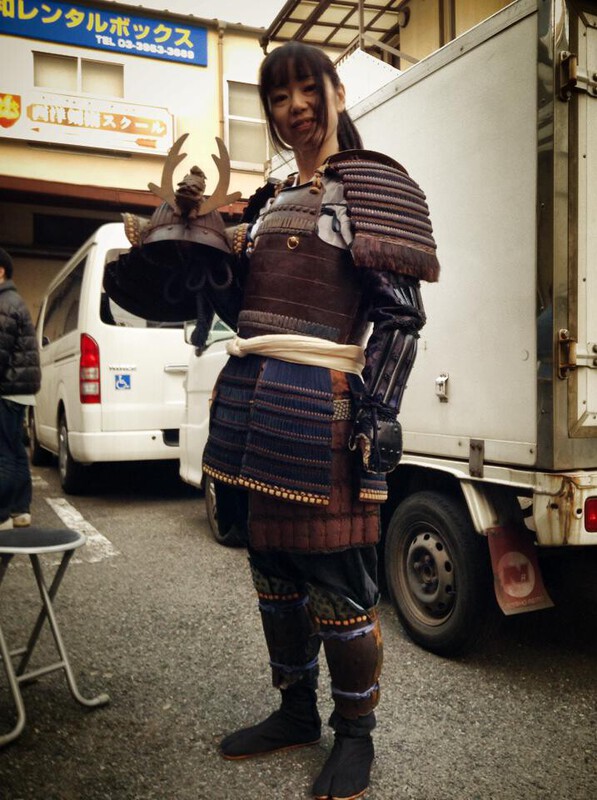-
Posts
1,690 -
Joined
-
Last visited
-
Days Won
11
Content Type
Profiles
Forums
Events
Store
Downloads
Gallery
Everything posted by Dave R
-
I have one with black lacquer on it and am rather interested as to what was going on there. The photo is a bit flat, but in hand the detail and the gilding of the tsuba are in unusually good condition.
-
A good article on the subject here..... http://www.ksky.ne.jp/~sumie99/acid polishing.html
-
Probably made as a traditional blade for a shin-gunto then, and since remounted in Buke-Zukuri mounts. Nice one to have.
-
Well it's not a gunto, which is a military sword, but it is mounted as a Katana. If it is Japanese made then by law it has to be traditionally made any thing else would be an illegal weapon, but........
-

Dyed rubbing alcohol - ok to use for cleaning?
Dave R replied to cju777's topic in General Nihonto Related Discussion
See if anyone sells Polish "Spirytus" aka Polish Vodka.... The link is just to clarify what I am referring to. https://www.theliquorbarn.com/polmos-spirytus-rektyfikowany-192-proof-750ml/ -

Channel youtube sensitive soul abstain
Dave R replied to French nihonto's topic in General Nihonto Related Discussion
Relax it's all Chinese shyte kit and relics. -
"I strongly suspect that we use most of these terms in a different manner to any Japanese, collector or non collector.".... I noticed that Mr Ohmura refers to traditional swords not mounted in Military mounts as Uchigatana.
-
I had a traditional bladed gunto mounted sword with that very same issue.
-
Evidently agreed with Henry Wilkinson, but unaware of his work on swords.
-
Repairs? Or were some originally in Showa era Buke Zukuri munts.
-
Got it! On my version of NMB I have to click a button to open up some functions.
-
an you post a link, alas I cannot find the download.
-
Would you like me to make one for you? Copper alloy is easier, I don't have access to a forge currently.
-
I had a feeling that one or more of these would be yours. I downloaded these images via google search for the most part, with the intention of copying some of the more pleasing and different ones.
-
They're a small item, and I suspect there are thousands of them in odd corners all over Japan unrecognised, unloved and ignored. Non of these are mine, alas, just images from the internet.
- 42 replies
-
- 10
-

-

-

-
I suspect there is a brisk market for such in Japan. You get a nice display without the hassle of licensing a blade.
-

Adding Kozuka/Kogai Slots in Saya
Dave R replied to DTM72's topic in General Nihonto Related Discussion
If you hunt this site you will find a thread about having new mounts made, with progress pics. Otherwise I suggest buying a knackered saya and taking it apart as research, and post pics here. -
-
I have bought from here, and found them helpful and relatively easy to deal with. https://www.namikawa-ltd.com/product/131
-
Possibly a repair job then.
-
I was thinking less pure white more the cream colour.... Is there a pure white Ito anyway?
-
I use isopropyl alcohol which can be as much as 99% pure, and is cheaper than ethyl.For oil I use Kurobara brand oil. Otherwise very much as you see posted above.
-
The whole wakizashi status thing is a bit odd. Nowadays we tend to go with 24 + ins = Katana, anything under is a Wakizashi until we hit 12 inches and then it is a Tanto, but....... The Japanese army in WW2 counted a new purpose made blade over 22 inches as a Katana, and when under pressure in the late war happily took old blades over 21 inches. We also know of more than a few of these under 21 inches in military mounts. Back in the Edo period, a Wakizashi was legally limited to 18 inches and under, and later (but still Edo) further reduced to a maximum of 16 inches blade length. That is why you get so many swords made as Wakizashi, with that second mekugi-ana just a couple of inches away, altered to fit with the change in the law. Interestingly, the Chūshingura deliberately carried swords longer than legally allowed because they were about to make themselves outlaws anyway and the extra length would be an advantage in the coming combat. Personal opinion only here, back in the day the Daito was made to (or bought at) whatever length suited the customer, governed by his height, the intended use, his circumstances , and the school of swordsmanship he followed. As for the 24 inch rule, what a good way to save a lot of swords from the occupation government's policy of destruction, defining anything under 24 inches as a Wakizashi and except from destruction.





.jpg.b1e1fa96d9a0ca5e6d838aca46f85ddd.jpg)






